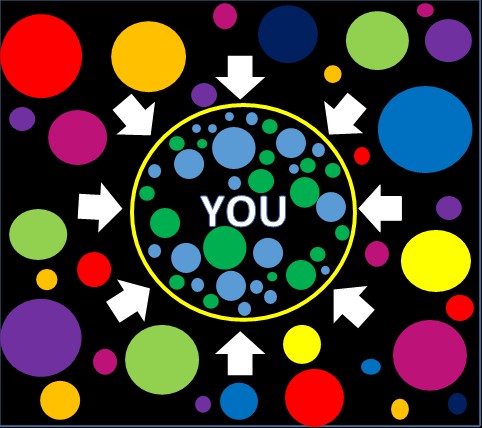
Dawn Stahura's ACT UP model as a slide presentation.
Tips for Selecting Information Sources
The type of information sources you use will depend upon your research topic and the requirements of your research project.
Ask yourself these questions to determine the types of information sources most useful for your research:
Think about the types of information you need to find on your topic.
IF YOU NEED:
You should always use a variety of sources in your research so that you get the best, most complete and current information and can validate information across different sources.
Primary vs. Secondary Sources
PRIMARY SOURCES
Primary sources, containing firsthand knowledge, observation or information are created when an event is currently happening. Examples of primary sources include:
SECONDARY SOURCES
Secondary sources are written after an event has occurred, sometimes many years later. These sources summarize or analyze the information from primary sources. Secondary source examples include:
Descriptive vs. Analytical Sources
Descriptive sources:
Analytic sources:
Questioning with the 5Ws
Often finding information is less of a problem than figuring out whether that information will be appropriate for your project. One way to decide whether a source is “good” for your project or not, is to begin by asking some questions about the source. Remember! Evaluation is a holistic process. One of these questions isn’t enough to determine a source’s usefulness. You need to take them all into consideration.
WHO created the source?
WHAT is the purpose of the source?
WHERE does the information come from?
WHEN was the source published?
WHY is this source useful to you?
With the proliferation of AI-generated content, it is crucial that users evaluate every piece of information thoroughly to determine its reliability, trustworthiness, and authority. While there are benefits of using Generative AI, it has several potential issues that users need to keep in mind. Some of the issues include:
Who is the author? Could their view be biased in any way?
Text or images generated by AI tools have no human author, but they are trained on materials created by humans with human biases. Unlike humans, AI tools cannot reliably distinguish between biased material and unbiased material when using information to construct their responses.
What was the intended audience?
Generative AI tools can be used to generate content for any audience based on the user’s prompt.
What is the intended purpose of the content? Was it created to inform, to make money, to entertain?
Generative AI tools can create convincing text and images that can be used to propagate many different ideas without being clear that the information or images could be false.
Where was it published? Was it in a scholarly publication, a website, or an organization page?
Generative AI has already been used to create content for websites and news outlets. Considering whether the source is scholarly, has a good reputation and has a clear history of providing reliable information is useful for figuring out whether the information you find is useful or misleading.
Does it provide sources for the information?
Articles, news outlets, and websites that provide sources could be an indicator of reliability. Further assessing the sources by following the links and citations to verify the information will help confirm that the information you find is reliable.
Credit: AI Tools and Resources, University of South Florida Libraries
This content is from SIFT & PICK Fact Checking & Source Evaluation by SBCC Luria Library. SIFT & PICK by Ellen Carey is licensed under a Creative Commons Attribution-NonCommercial-ShareAlike 4.0 International License.
Evaluating Sources - ACT UP & Push Against Privilege
We evaluate resources to locate reliable and credible sources for our research whether it is for a class assignment or for personal interest. We evaluate resources so that we don't believe everything that we come across on the web and so that we are not fooled by that information. We also evaluate resources because it is our social responsibility to make sure that the information we share with others is trustworthy. We also evaluate sources to make sure that the dominant voices in our society do not silence the minoritized voices. In order to do so, we apply the ACT UP method to our evaluation.
Use the acronym below to evaluate your sources answering as many of these questions as you can.
Content on this has been borrowed with permission from Dawn Stahura 's Evaluating Sources: ACT UP (Links to an external site.).
More more tips on evaluating news and identifying fake news, view the research guide: Evaluating News: Fake News and Beyond.

Did you know that you have a filter bubble around you right now? That every time you do a search on Google, it tailors the results based on your previous search history?
Did you know that your search results will look different if you use Google on campus as opposed to using it at a cafe in Beverly? It's because Google is making certain assumptions about you based on your IP address.
While we all like customized information there is a real danger of being so trapped inside your filter bubble that you never see the other side of a story. In order to be better informed, we need to know what each side is saying about an issue and not fall for confirmation bias (reading only sources that already fall in line with our current views). Here are two free resources to help you do just that!
Unlike regular news services, AllSides exposes bias and provides multiple angles on the same story so you can quickly get the full picture, not just one slant.
"Promoting critical thinking, education, and informed citizenship by presenting controversial issues in a straightforward, nonpartisan, primarily pro-con format."